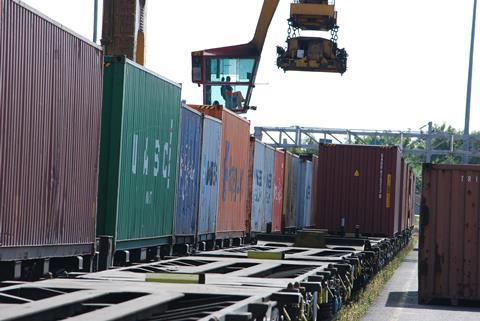
EUROPE: While regulators and competition authorities seem to be primarily focused on ensuring a level playing field in the rail freight market and reducing the dominance of state-owned incumbents, external forces and the emergence of global logistics groups are poised to shake up the sector, according to a study by SCI Verkehr.
In its latest analysis of the European intermodal rail freight market, the consultancy suggests that the control of ports and hinterland terminals lies at ‘the epicentre of a disruptive development enforcing a change of perspective’. Whereas the landscape was once defined by the market shares of individual operators at a national or regional level, in future policymakers will need to consider the organisation and control of global transport chains, it suggests.
The study highlights the activities of the so-called ‘Big Four’ service providers which the consultancy believes are steadily reshaping global transport chains: MSC, Maersk, CMA CGM and Cosco. It cites as an example recent investment by MSC in port operator Hamburger Hafen und Logistik AG and its railway subsidiary Metrans, but the shipping group is also expanding its rail activities through Portuguese freight operator Medway and acquired three railway concessions in west Africa through the takeover of the local Bolloré business.
A key factor identified in the study is the need for investment, both to increase infrastructure capacity and to refresh outdated rolling stock fleets. Coupled with moves by regulators to tackle low growth rates and a perceived imbalance in competitiveness, this is opening up opportunities for the major players, the consultants believe. ‘With high purchasing power, these global players can capture partnerships, shares, and whole enterprises along the supply chain’, explains SCI Verkehr. ‘With every takeover of ports, hinterland terminals, rail and increasingly road operators, their influence grows. Service networks guarantee flexibility within their own control: volumes, routes and combinations of transport modes in Europe can be determined independently from suppliers and competitors.’
Warning that ‘all stakeholders must have a clear view on the European intermodal market’, SCI Verkehr suggests that ‘the growing clout of these big players has the potential to reorganise the competitive framework of the railway and logistics sector. With uninhibited influence on supply and transport chains, their own strategic aims dominate, and they become more and more independent from political regulation.
‘Neither national nor European policy goals — like climate change action, mobility, and connectivity for peripherical regions — are the main drivers, but the control of European import and export flows, which guarantee profits for each player.’

















